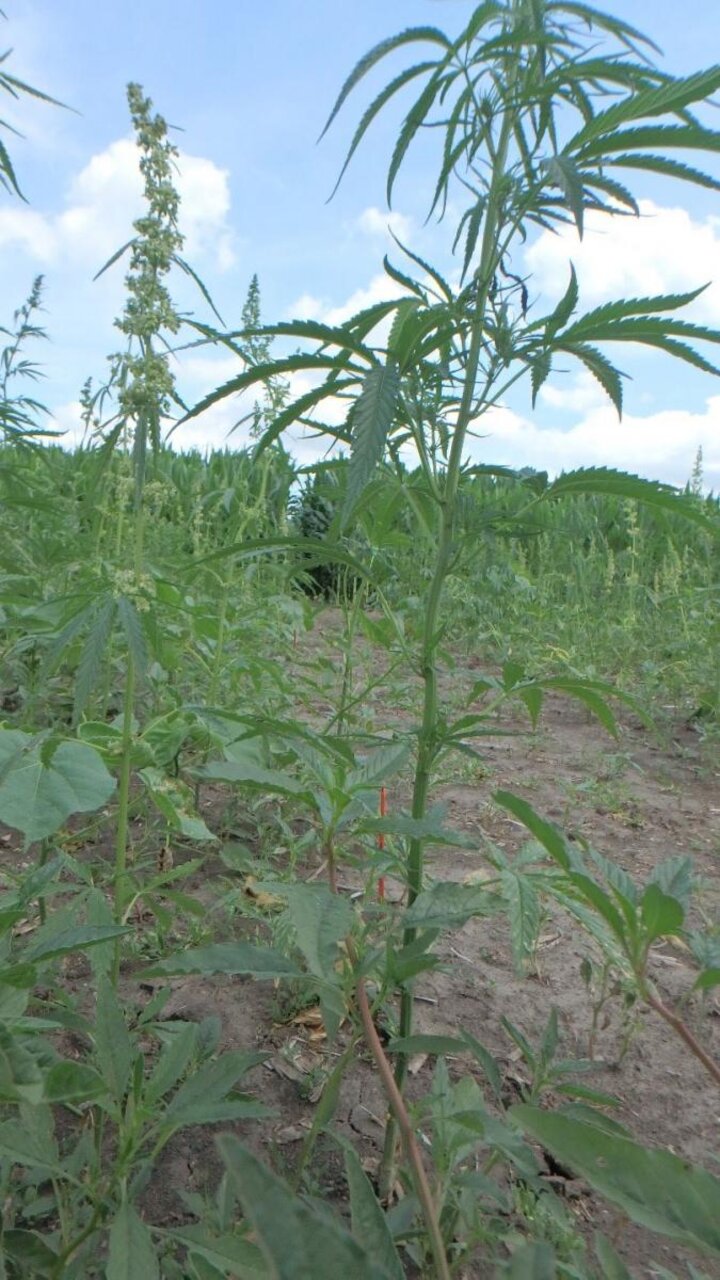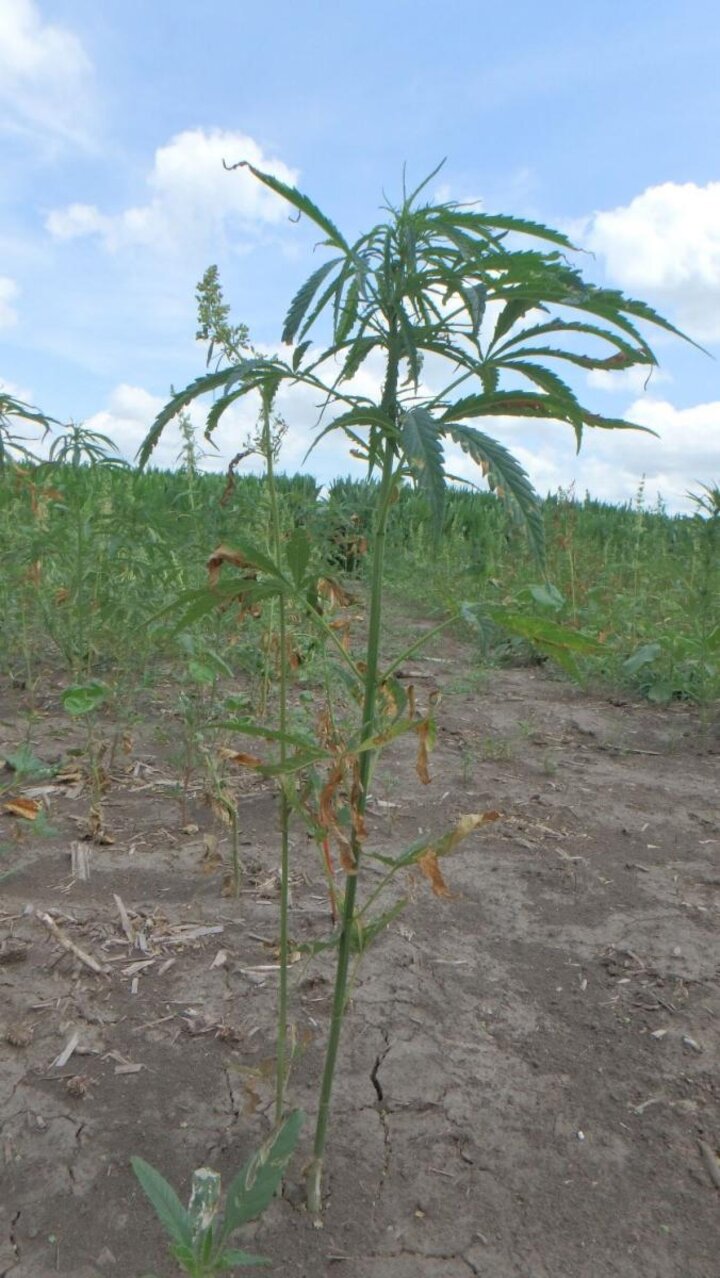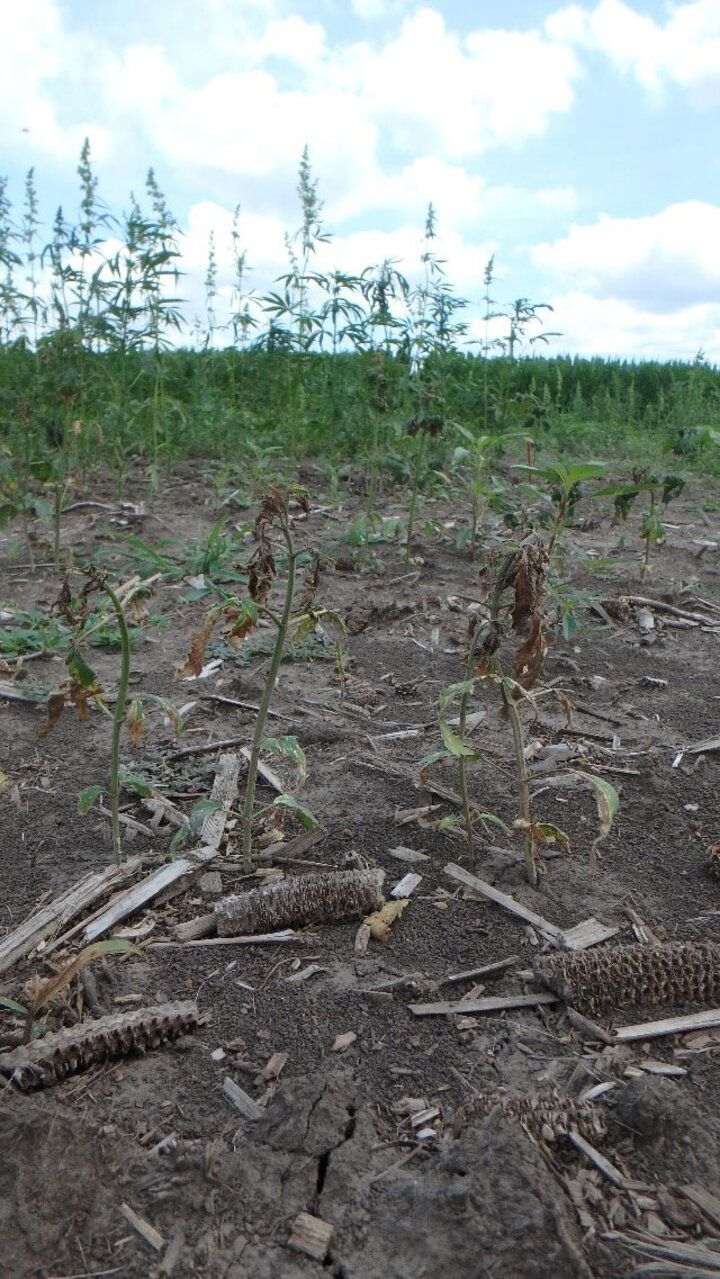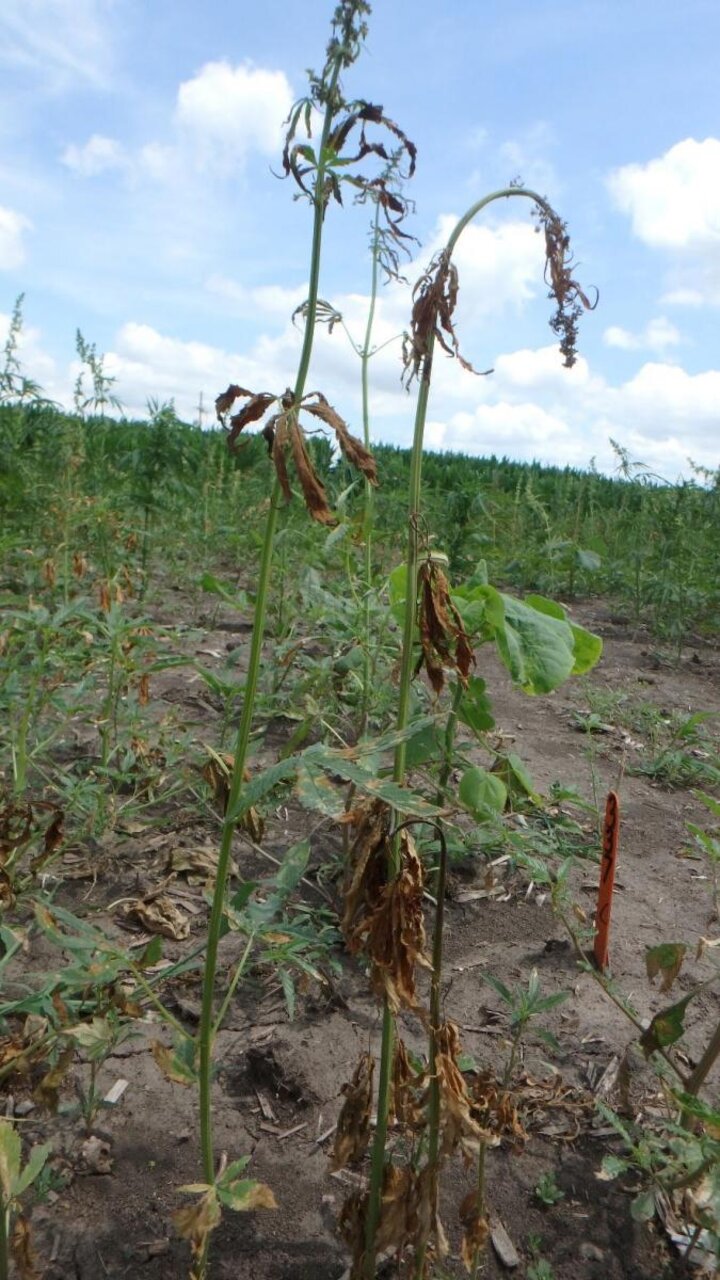Last year, Nebraska legalized industrial hemp, however, there are no herbicides available for use in hemp. Therefore, during the 2020 season we conducted five studies (four field studies at Mead and one in a greenhouse in Lincoln) to test hemp tolerance to various herbicides that are commonly used in corn and soybean. This is the fourth article that outlines the results of a study that tested hemp tolerance to herbicides applied late-POST to about 24-inch-tall industrial hemp.
Hemp Herbicide Tolerance Series
- Industrial Hemp Tolerance to Soil-applied Herbicides
- Industrial Hemp Varieties Exhibit the Same Tolerance Level to PRE-Herbicides
- Industrial Hemp Tolerance to Early-POST Herbicides
- Industrial Hemp Tolerance Late-POST Herbicides
- Industrial Hemp Tolerance to Flame Weeding
The treatment list included a total of 18 herbicides that were selected for exploratory research of potential products for POST use in hemp. There were no weed control ratings presented. For individual weed response ratings to tested herbicides, please check the corn and soybean sections of the 2020 Guide for Weed, Disease and Insect Management in Nebraska.
Industrial hemp (variety X-59 for fiber) was planted on June 8, 2020 in 30 inch rows, 0.5 inches deep and at about 20 thousand seeds per acre (10lbs / acre). Herbicides (Table 1) were sprayed on 24-30 inch tall hemp. The study was arranged in the randomized compete block design with 3 replications with 30-foot plots. Hemp injury ratings were conducted at 6, 13 and 21 days after treatment (DAT) utilizing the scale from 0-100 (0=no injury; 100=dead plant). The study was terminated after the last rating (just before pollination) to prevent seed formation and future volunteer hemp.
Results
Hemp exhibited high level of sensitivity to most of the tested herbicides. To start on a positive note, visual injury levels ranged from almost no injury (~5%) with only one herbicide, to some temporary injury (~20%) with a few herbicides and severe injury or death (60%-93%) with about 10 out of 18 herbicides tested.
Table 1| Herbicide (rate/acre) | 6 DAT | 13 DAT | 21DAT |
|---|---|---|---|
| 1. Permit (0.66 oz) | 37 | 75 | 73 |
| 2. Accent Q (0.9 oz) | 45 | 68 | 73 |
| 3. Warrant Ultra (49 oz) | 25 | 16 | 10 |
| 4. Plateau (3 oz) | 20 | 63 | 63 |
| 5. Classic (0.33 oz) | 68 | 60 | 63 |
| 6. Rimsulfuron (0.66 oz) | 60 | 65 | 67 |
| 7. Starane Ultra (6.4 oz) | 76 | 83 | 91 |
| 8. Stinger (6 oz) | 3 | 1 | 0 |
| 9. Hornet (2 oz) | 45 | 67 | 80 |
| 10. Drive XLR8 (Quinclorac) (64 oz) | 20 | 13 | 6 |
| 11. Basagran (1.5 pt) | 76 | 91 | 93 |
| 12. Moxy 2E (1.5 pt) | 38 | 38 | 28 |
| 13. Cobra (10 oz) | 76 | 43 | 36 |
| 14. Resource (6 oz) | 36 | 7 | 3 |
| 15. Flexstar (1 pt) | 75 | 62 | 45 |
| 16. First Rate (0.33 oz) | 60 | 78 | 87 |
| 17. Anthem Maxx (4 oz) | 42 | 25 | 30 |
| 18. Bicept Lite II Magnum (1.5 qt) | 73 | 86 | 88 |
Slight hemp injury (3%) was evident in plots with Stinger only (Photo 1), indicating that this product is safe to use POST (post-emergent) in hemp (Table 1).
Temporary hemp injury, which lasted for two weeks, was caused by a few products. For example, Warrant Ultra, Drive XLR8 and Resourse caused 20-30% visual injury at 6 DAT. However, by 13 DAT injury ratings were 10-16%, and by 21 DAT they were below 10%, suggesting that these three products have potential for use in hemp after crop emergence (post-emergent).
Heavy hemp injury (>30%) was caused by Moxy 2E (Photo 2), Cobra and Anthem Maxx with as much as 76 % at 6 DAT. Hemp injuries were reduced to about 30-40% by 13 DAT and to about 30% by 21 DAT, indicating the hemp recovery. We do not know if these injuries resulted in any reductions of final yield as study was terminated early.
Severe hemp injury was caused by all other herbicides (10 products), causing 63-93% injury by 21 DAT (Table 1). For example, Plateau, Classic, Permit, Accent Q, Starane Ultra, Hornet (Photo 3), Basagran (Photo 4), First Rate, Flexstar and Bicept Lite II Magnum caused unacceptable hemp injuries and should not be used in hemp POST.




Conclusion
Hemp exhibited relatively good tolerance to only few of the tested products that can be used postemergence in industrial hemp. Stinger caused almost no hemp injury, thus should be safe to use. Warrant Ultra, Drive XLR8 and Resource also have some potential for use. Moxy 2E, Cobra and Anthem Max can be used selectively (e.g. rescue treatments) because they can cause high injury levels (30%). All other products caused unacceptable injuries, and thus should not be used in hemp post-emergent. It is important to note that the above conclusions are based only on one year of data. This study will be repeated in 2021 season.
